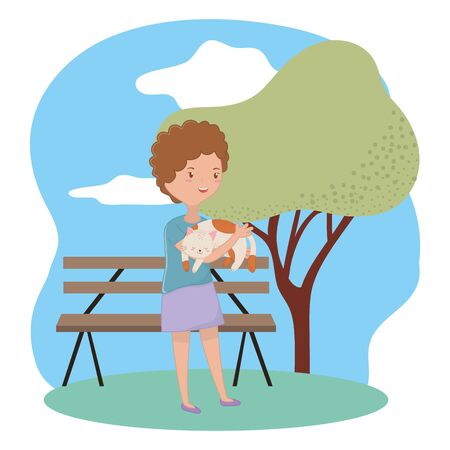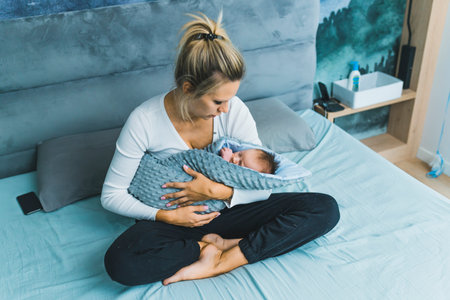What Is Unstructured Play?
Unstructured play is any type of play that isn’t guided by adults, rules, or specific objectives. It allows kids to use their imagination, creativity, and problem-solving skills without external direction. Unlike structured activities like organized sports or scheduled lessons, unstructured play gives children the freedom to explore and discover at their own pace.
Characteristics of Unstructured Play
Unstructured play can take many forms, from building forts with couch cushions to making up games in the backyard. Here are some key characteristics:
- Child-Led: Kids decide what to do and how to do it.
- Open-Ended: There’s no set outcome or predefined goal.
- Creativity-Driven: Encourages imaginative thinking and innovation.
- No Adult Intervention: Minimal or no adult direction allows for independent problem-solving.
- Exploratory: Children learn by experimenting and discovering new possibilities.
How Unstructured Play Differs from Structured Activities
The biggest difference between unstructured and structured play lies in the level of control and guidance. Here’s a simple comparison:
| Aspect | Unstructured Play | Structured Activities |
|---|---|---|
| Main Focus | Exploration and creativity | Achieving specific goals or skills |
| Guidance | No adult direction, child-led | Taught or supervised by adults |
| Pace | Keeps evolving based on child’s interests | Scheduled with set timeframes |
| Cognitive Development | Nurtures problem-solving and decision-making skills naturally | Tends to focus on specific skill-building (e.g., sports techniques) |
| Sociability | Might involve solo or group play with flexible interactions | Tends to have structured teamwork or competition elements |
The Role of Parents in Encouraging Unstructured Play
You don’t need to plan every moment of your child’s day—sometimes, letting them figure things out on their own is the best approach. Providing open-ended toys like building blocks, art supplies, or even just access to nature can inspire creativity. The key is giving kids the space and freedom to explore without too much interference.
2. Cognitive and Emotional Benefits
Unstructured play is more than just fun—it plays a crucial role in shaping a childs cognitive and emotional development. When kids engage in free play without rigid rules or structured activities, they naturally develop essential life skills that help them navigate the world with confidence.
Fostering Creativity Through Play
Creativity thrives when children have the freedom to explore their imagination. Unstructured play allows kids to invent their own games, create stories, and experiment with different ideas. Whether they are building forts out of blankets, pretending to be astronauts, or drawing imaginative creatures, they are constantly engaging their creative minds.
Enhancing Problem-Solving Skills
Without pre-set instructions or adult interference, children must figure things out on their own during unstructured play. This encourages them to think critically and solve problems independently. For example, if a child is building a tower with blocks and it keeps falling over, they will naturally try different strategies until they find one that works. These problem-solving experiences help them develop resilience and adaptability.
Building Emotional Resilience
Unstructured play also provides children with opportunities to experience emotions in a safe environment. They learn how to cope with frustration, handle disappointment, and manage conflicts with peers. When playing with others, they practice important social-emotional skills such as sharing, negotiating, and expressing their feelings appropriately.
Key Cognitive and Emotional Benefits of Unstructured Play
| Benefit | Description |
|---|---|
| Creativity | Sparks imagination by allowing kids to invent new games and stories. |
| Problem-Solving | Encourages independent thinking and critical decision-making skills. |
| Emotional Resilience | Helps children learn to manage frustration, disappointment, and conflict. |
| Social Skills | Presents opportunities for cooperation, sharing, and teamwork. |
The Long-Term Impact of Free Play
The benefits of unstructured play extend far beyond childhood. The creativity, problem-solving abilities, and emotional resilience developed through free play lay the foundation for lifelong success. By giving kids the freedom to explore and learn at their own pace, we equip them with valuable tools that will serve them well in school, relationships, and future careers.

3. Social Skills and Independence
Unstructured play is a powerful tool for helping children develop essential social skills and independence. When kids engage in free play, they learn how to communicate, collaborate, and solve problems on their own. These experiences shape their ability to navigate social situations and become more self-reliant.
Building Communication Skills
During unstructured play, children naturally practice verbal and nonverbal communication. Whether they are negotiating roles in a pretend game or resolving conflicts over shared toys, they learn how to express their thoughts, listen to others, and interpret social cues.
Examples of Communication Development in Play
| Play Activity | Communication Skill Developed |
|---|---|
| Pretend Play (e.g., playing house) | Expressing ideas, storytelling, understanding roles |
| Building with Blocks | Explaining plans, asking for help, teamwork discussions |
| Outdoor Games (e.g., tag) | Following rules, giving directions, resolving disputes |
Encouraging Collaboration
Free play often involves group activities where children must work together to achieve a common goal. Whether they are building a fort or organizing a game, kids learn the importance of cooperation, compromise, and respecting different perspectives.
The Role of Teamwork in Play
- Puzzle Solving: Kids take turns and share ideas to complete a puzzle.
- Dramatic Play: Children assign roles and create a storyline together.
- Sensory Play: Groups of kids experiment with materials, learning from each other.
Nurturing Self-Reliance
In addition to fostering social skills, unstructured play allows children to develop independence. Without adult direction, kids learn how to entertain themselves, make decisions, and handle challenges on their own. This builds confidence and prepares them for real-world problem-solving.
Ways Free Play Promotes Independence
- Makes Decisions: Kids decide what games to play and set their own rules.
- Takes Initiative: They start activities without waiting for instructions.
- Solves Problems: Children figure out solutions when obstacles arise.
The benefits of unstructured play extend far beyond fun—it helps children grow into confident communicators, effective collaborators, and independent thinkers. By giving them the freedom to explore and interact on their own terms, we equip them with lifelong social skills that will serve them well in every stage of life.
4. The Role of Nature and Open-Ended Toys
Children thrive when given the freedom to explore, and nature provides the perfect setting for unstructured play. Whether its climbing trees, digging in the dirt, or collecting leaves, outdoor environments encourage kids to use their imagination while engaging in hands-on learning. Simple, open-ended toys further enhance this experience by allowing children to create, experiment, and discover new possibilities on their own.
How Nature Sparks Creativity
The natural world is full of endless opportunities for exploration. Unlike structured indoor play areas, nature doesnt come with predefined rules or specific ways to play. This allows children to invent their own games, solve problems creatively, and develop a sense of curiosity about the world around them.
Benefits of Outdoor Play
| Benefit | Description |
|---|---|
| Encourages Physical Activity | Running, climbing, and jumping help build strength, coordination, and overall health. |
| Enhances Problem-Solving Skills | Navigating uneven terrain or figuring out how to build a fort promotes critical thinking. |
| Sparks Curiosity | Observing insects, plants, and weather changes fosters a love for science and discovery. |
| Boosts Emotional Well-Being | Spending time outdoors reduces stress and improves mood. |
The Power of Open-Ended Toys
Toys that don’t have a single purpose or fixed outcome allow kids to take control of their play. Blocks can become castles, cars, or animals. A stick can be a sword, a magic wand, or a fishing rod. These types of toys encourage children to think outside the box and develop important cognitive skills.
Examples of Open-Ended Toys
- Building Blocks: Can be stacked, connected, or arranged in countless ways.
- Dolls and Figures: Encourage storytelling and imaginative role-playing.
- Naturally Found Objects: Sticks, rocks, and leaves can be used in creative ways during outdoor play.
- Dress-Up Clothes: Let kids step into different roles and explore various scenarios.
The Connection Between Nature and Open-Ended Play
The combination of outdoor environments and open-ended toys creates an ideal space for learning through exploration. Whether a child is using sticks to build a miniature house in the backyard or creating an obstacle course using natural elements, they are actively engaging their minds while having fun. By allowing children the freedom to explore both nature and open-ended toys without rigid guidelines, we nurture their creativity, problem-solving abilities, and confidence.
5. How Parents Can Foster Unstructured Play
Unstructured play is essential for childrens development, but as parents, it can sometimes feel challenging to find the right balance between encouraging free play and ensuring safety. Here are some practical ways you can create opportunities for unstructured play while providing appropriate supervision.
Create a Safe and Engaging Play Environment
Providing a safe space where kids can explore freely is key to fostering unstructured play. Whether indoors or outdoors, ensure that the environment is suitable for open-ended activities.
| Location | How to Encourage Free Play |
|---|---|
| Backyard or Park | Offer natural elements like rocks, sticks, and dirt for creative exploration. |
| Living Room | Provide pillows, blankets, and cardboard boxes for fort building. |
| Playroom | Stock with open-ended toys like blocks, dolls, and art supplies. |
Limit Screen Time and Scheduled Activities
Children need downtime to engage in self-directed play. While structured activities have their benefits, too many scheduled events can reduce opportunities for creativity and exploration.
- Set specific screen-free times during the day to encourage active play.
- Avoid overloading your child’s schedule with extracurricular activities.
- Create a routine that includes plenty of open-ended playtime.
Encourage Outdoor Exploration
The outdoors provides endless possibilities for unstructured play. Let kids climb trees, dig in the dirt, or simply run around without a strict agenda.
Tips for Outdoor Play:
- Dress kids appropriately so they can explore without restrictions.
- Select safe areas where they can roam freely under supervision.
- Allow them to take reasonable risks to build confidence and problem-solving skills.
Avoid Over-Directing Their Play
As parents, it’s tempting to step in and guide childrens activities, but allowing them to lead their own play fosters independence and creativity. Instead of giving instructions, try asking open-ended questions like:
- “What do you think will happen if you try that?”
- “How else could you use those materials?”
- “What story are you creating with your toys?”
This approach encourages critical thinking without limiting their imagination.


